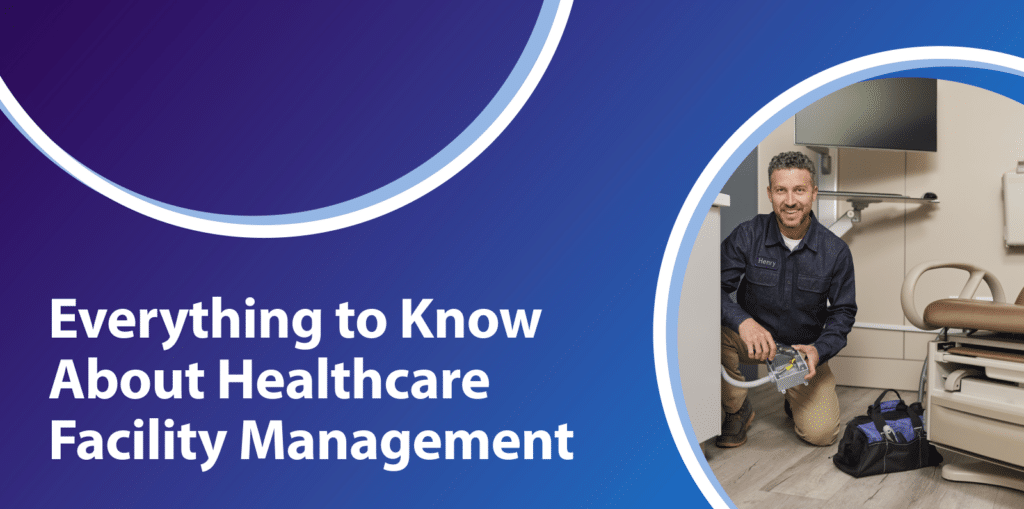How Facilities Management Enables Cost Containment in Healthcare

If your healthcare organization is like most, you’ve seen significant cost increases lately. You may also be experiencing labor shortages that make maintaining your facilities difficult, especially without incurring additional costs. However, healthcare organizations can contain costs while maintaining safe, compliant, and welcoming facilities.
What is Cost Containment in Healthcare?
Cost containment in healthcare involves reducing current costs and saving money in the future. It involves more than merely undertaking traditional cost-cutting measures to include a comprehensive strategy using analytics and process improvements. Leaders throughout the organization work together to analyze expenses and find ways to trim current costs and prevent costs from significantly increasing in the future.
Why Healthcare Cost Containment is Important
Cost containment is critical for healthcare organizations, especially since recent events such as the pandemic and the economy have increased volatility in the healthcare industry. If costs continue to grow, healthcare organizations will no longer be able to offer services at an affordable price. These organizations will cease to be viable.
A cost-containment strategy offers substantial benefits for healthcare organizations.
- It is one way to integrate the management of the clinical and financial aspects.
- The same data that helps with cost containment can also be used to improve the quality of care.
- Everyone in the organization clearly understands what drives costs upward.
What is Facilities Management in Healthcare?
Healthcare facilities management refers to maintaining and overseeing the safety and operations of the healthcare facility. It involves managing day-to-day operations, ensuring an excellent care environment, ensuring the facility complies with federal and state regulations, controlling access, and ensuring data security.
Examples of facilities management tasks in healthcare organizations are:
- Checking the status of medical equipment and supplies, re-ordering supplies at the optimal time
- Establishing maintenance programs
- Inspecting the facilities for cleanliness
- Inspecting equipment regularly
- Negotiating with suppliers
- Monitoring systems such as emergency power generators
- Working with leadership in other departments to develop crisis plans
- Managing construction projects to keep them safe, on time, and on budget
- Setting up and maintaining surveillance systems
- Maintaining the security and integrity of computer data
Healthcare facilities management must be proactive to be effective. A broken-down system
could cause injury or death to patients and staff. A building that falls into disrepair may also violate regulations, putting the facility out of compliance.
Facilities Management and Cost Containment in Healthcare
Developing a proactive facilities management plan also helps healthcare organizations save money. Negotiating agreements with suppliers ahead of time can ensure the best prices. Maintaining equipment can also avoid expensive repairs. Finally, facilities management can improve the patient experience, increasing the likelihood that patients will use the organization in the future and boosting online ratings.
Improve Patient Experience
Effective facilities management can include machine learning and artificial intelligence to monitor and adjust factors affecting the patient experience constantly. For example, a facilities management system can automatically adjust the temperature as the waiting room fills or turn off artificial lighting when sunlight fills the room. It can constantly report on and adjust air quality and humidity to ensure patient comfort and safety. The system can also track cleaning
schedules.
Predictive Maintenance Planning
Planned maintenance can significantly improve safety and reduce costs. One type of planned maintenance is predictive maintenance. Predictive maintenance gathers information about the condition of the equipment to predict when repairs or maintenance is required.
Predictive maintenance can help healthcare organizations contain costs in several ways.
- If companies wait until equipment breaks down, they will have downtime, which results in lost revenue and unhappy customers.
- Once a machine goes down, the company must repair it quickly. Procuring parts in an emergency generally means paying more for them.
- Equipment failure may violate regulations, which may mean fines and bad publicity.
- It can also extend the life of the equipment, saving money in the long run.
Enhance Energy Savings
A facilities maintenance plan can enable healthcare organizations to save on energy. For example, facilities managers could recommend double-glazing windows or energy-saving light bulbs. Al technology can help organizations avoid heating and cooling spaces that are not being used. These small changes can add up to significant cost savings.
Boost Employee Satisfaction
Employee turnover is costly. If employees leave, organizations must advertise for replacements and then provide orientation. Staff shortages can also impact the customer experience, lowering revenues over the long term. A goal of facilities management is to make the premises more employee-friendly. Clean offices at an appropriate temperature make employees happy and more inclined to stay.
Better Space and Occupancy Planning
Effective space management also reduces costs. Many spaces in a facility are occupied for only a few hours each day. Good facilities management can help healthcare organizations understand how space is used and gain control of the area. It can allow management to disperse people across the space better, as well.
How ServiceChannel Supports Healthcare
A well-managed facility can help healthcare organizations keep their costs in line. Excellent facilities management requires constant monitoring and inspection.
ServiceChannel is an effective partner for cost containment in healthcare. We can handle the day-to-day and predictive maintenance functions so that you can focus on your core business. We can source work to the best providers and help you review and validate invoices to ensure you only pay for the completed work. We also manage all your data on our ServiceChannel facilities management platform to provide real-time visibility and provide advice to guide your business decisions.
Learn how ServiceChannel Managed can help you contain costs today.



